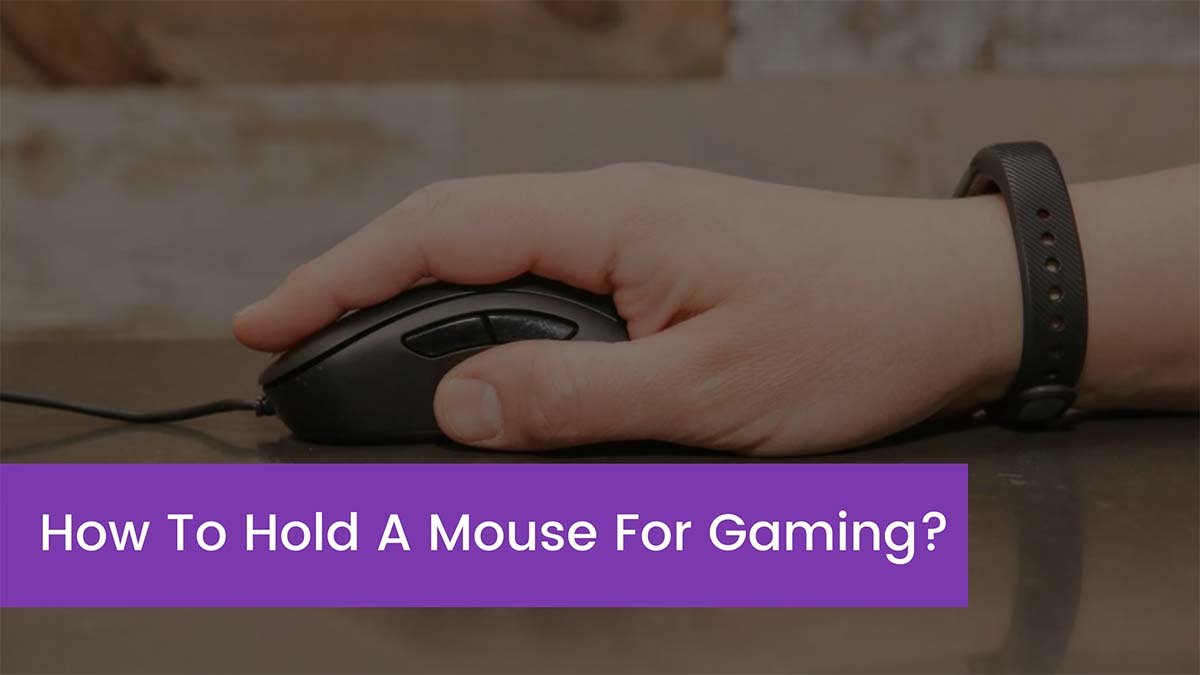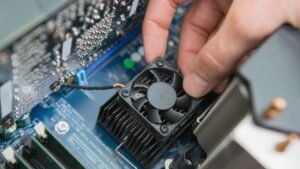Suppose you spend most of your day in front of a computer, whether for business, leisure, or gaming, knowing how to hold a mouse properly. Repetitive motions or keeping your mouse in the same position for an extended period might lead to repetitive strain injury or carpal tunnel syndrome.
Mice come in a variety of sizes and weights, affecting how you hold the mouse. Make sure to choose one that fits your hands well and allows you to move around freely.
There are numerous mouse grip styles, each of which is distinct from the others. Several things influence how you hold the mouse. Today, we’ll look at different mouse gripping techniques to help you choose the one that works best for you.
What Is the Best Way to Use a Gaming Mouse?
To utilize a mouse appropriately, we need to be aware of a few key points:
- Maintain a 90-degree angle with your elbow. You don’t want to overextend yourself. This angle allows you to keep the mouse in a natural posture with your body.
- Maintain a relaxed grasp. Make sure you’re not holding on too firmly. Gripping too tightly can lead to pain and injury in the future.
- Do not move the mouse around with your wrist. Instead, use your arm.
- At all times, elbows should be on the table. This technique helps to improve control by avoiding needless movements. When it comes to nailing those flip shots, it’s a significant aid.
- Toggle the DPI settings on your mouse to your liking. It is essential when playing games, but it is also quite important when it comes to comfort.
- To click, use only one finger (two fingers max). When connecting, do not use more than one finger.
- Extended gaming sessions are ideal, but after an hour or two of play, your performance begins to deteriorate, resulting in you missing that crucial headshot. One of the causes is fatigue from moving the mouse around.
Of course, there are a variety of ways to handle a mouse while gaming comfortably. Players adjust their strategies based on the abilities and precision necessary. When the debate about how to comfortably hold a mouse, it is pretty simple to distinguish between the proper way to keep a gaming mouse and what is not.
Surprisingly, the vast majority of these methods and styles are incorrect. Gamers and non-gamers invent their strategies for holding mice that, in the end, do not suit them, resulting in pain, weariness, and damage. When using a mouse, it should be held so that it does not cause any of the above.
Grip Styles for the Mouse
We’ve picked up the most acceptable ways to handle your gaming mouse, whether it’s a laser or optical model. Professional e-Sports players endorse them, so you, my reader, can be assured that you will find them helpful.
You can grip your gaming mouse in three different ways. These are the ones:
- Palm Grip
- Claw Grip
- Fingertip Grip
Palm Grip
The palm grip is the simplest and most comfortable method of holding a mouse. There’s no getting around it. Non-gamers and gamers, experts and amateurs alike, use this strategy. And this strategy is perfect since it is easily adaptable to your workstation and a change in surroundings, such as a coffee shop.
Furthermore, this is a more restless grasping style. Your hand will not tire from gripping in this position. You also don’t have to put any more pressure on the mouse. You can effortlessly move the mouse around while keeping your hands flat on the mouse. This trick allows for extended game sessions without becoming fatigued.
If you have small hands, though, you may have problems. In comparison to a standard mouse, a gaming mouse is more prominent in size. In this case, size does matter. Smaller hands will struggle to reach the buttons’ ends for the most precise activation, causing discomfort.
As a result, this approach is suitable for both average and large hands.
Claw Grip
This grip, as the name implies, makes your hand look like a claw. This stance, contrary to popular opinion, does not put any additional strain on your hand. You have your fingers directly on top of the buttons. The mouse’s palm rests against the slanting end at the back.
The tips of your index and middle fingers make an arch, leading directly to the mouse buttons. It’s an ideal situation, but it’s not without flaws. You wouldn’t be able to hold this position for more than a few hours. That, in our opinion, is approximately the maximum amount of time you should be playing at one time.
Gaming mice typically have more buttons than a standard mouse. This strategy makes it simple to use the additional buttons. As a result, we strongly advocate this strategy for MMO games, where it is critical to use the extra buttons that have been generously offered.
This strategy can also be used to play first-person shooter games. The claw pattern allows for mobility and flexibility. More mobility means faster response time, which is just what you need to get out of a sticky situation. It’s worth noting that the claw grip makes horizontal mouse movement easier.
Fingerprint Grip
The palm of your hand makes the most touch with the mouse in this method, leaving your fingers free to handle movement. This approach is suitable for short-distance bursts of activity as well as constant, mono-directional drags. That is, you can maintain high levels of precision in micro-movements.
This is especially important in e-sports games, where precise movement is crucial. You can participate in close-quarter battle without breaking a sweat, getting those delectable no-scope kills, thanks to explosive bursts of action.
It won’t be an issue if you’re dealing with high-recoil weaponry. This grip lets you slide the mouse down smoothly, negating any vertical recoil from your in-game weapon.
Final Words
Experiment with all of the compelling methods discussed in this article. Make sure you’re imitating them correctly; otherwise, you risk wrist and hand injury. Please choose one or a mix of them, whichever allows you to have a comfortable and uninterrupted gaming experience. Also, keep in mind that the problem could be caused by a dirty, uneven mousepad or a faulty mouse. As a result, don’t forget to wash the mousepad and check the mouse from time to time.
Furthermore, regardless of the grip you choose in the end, it is critical to stand up and take rests from time to time so that the mouse does not overwork your hand. Switching to keyboard-only duties is also effective, but taking a stroll provides your body with a well-deserved break.



